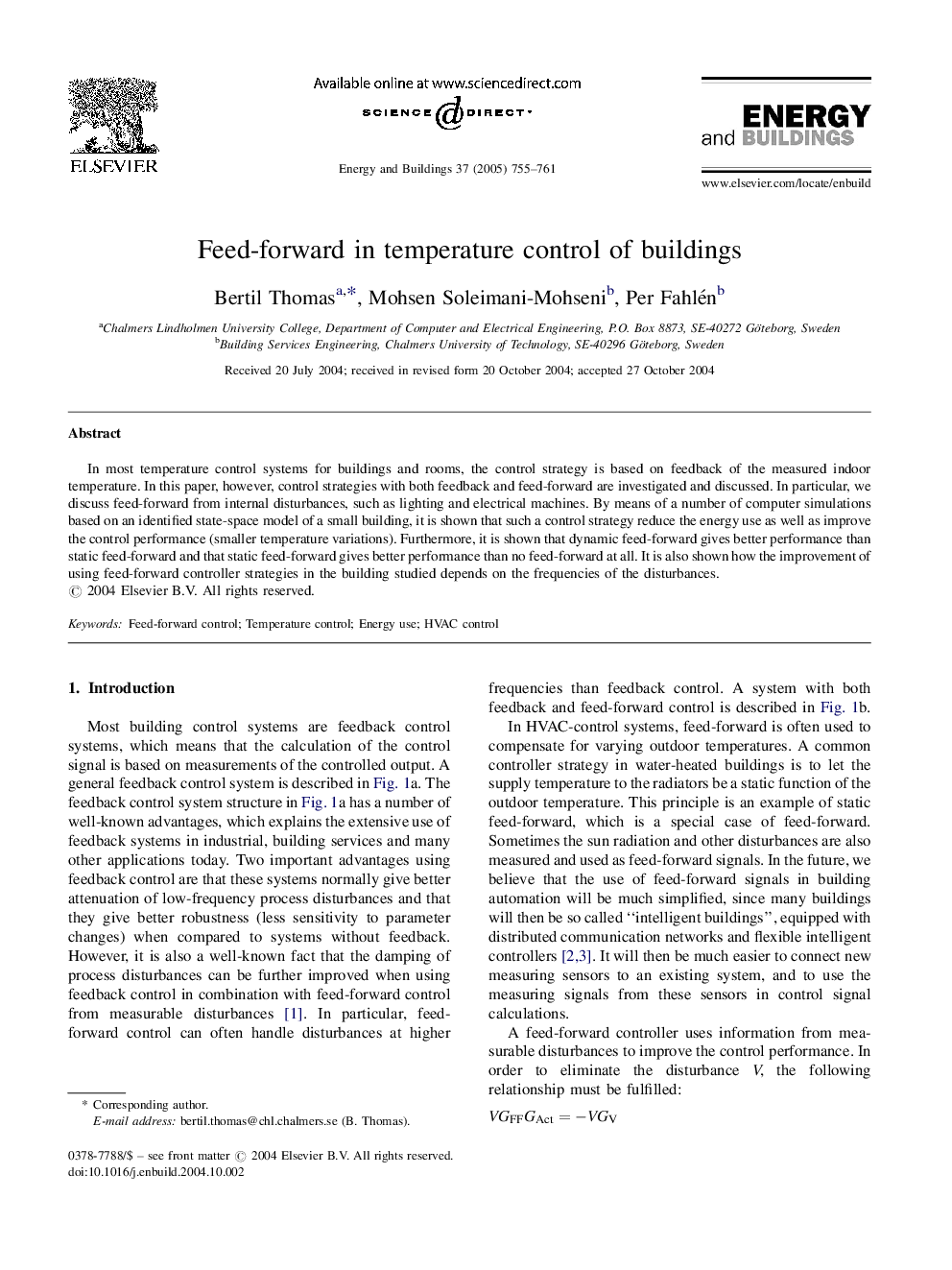| Article ID | Journal | Published Year | Pages | File Type |
|---|---|---|---|---|
| 10286433 | Energy and Buildings | 2005 | 7 Pages |
Abstract
In most temperature control systems for buildings and rooms, the control strategy is based on feedback of the measured indoor temperature. In this paper, however, control strategies with both feedback and feed-forward are investigated and discussed. In particular, we discuss feed-forward from internal disturbances, such as lighting and electrical machines. By means of a number of computer simulations based on an identified state-space model of a small building, it is shown that such a control strategy reduce the energy use as well as improve the control performance (smaller temperature variations). Furthermore, it is shown that dynamic feed-forward gives better performance than static feed-forward and that static feed-forward gives better performance than no feed-forward at all. It is also shown how the improvement of using feed-forward controller strategies in the building studied depends on the frequencies of the disturbances.
Related Topics
Physical Sciences and Engineering
Energy
Renewable Energy, Sustainability and the Environment
Authors
Bertil Thomas, Mohsen Soleimani-Mohseni, Per Fahlén,
